We're an affiliate
We hope you love the products we recommend! Just so you know, we may collect a share of sales or other compensation from the links on this page at no additional cost to you. Thank you if you use our links, we really appreciate it!
The Pugs have evolved from the laps of the royal Chinese emperors into the homes of many Americans, thanks to their unique appearance and charming personality
Pugs are small-sized dogs with a stocky body crowned with an adorable creased face that mimics human expressions.
Additionally, these sweet-faced canines are relatively low to maintain, an aspect which makes them a superb choice for novice dog owners.
Read on to discover everything you need to know about the Pug dog breed including their rich history which spans centuries and their present role as family dogs.
What is a Pug? A Brief History of Pugs
The rich history of the original Pug dog breed dates back to 400 BC in ancient China and spans different continents over time.
Back in time, most dog breeds were originally bred to perform working roles such as hunting and retrieving – even though most of them are primarily household companions today.
But not so with the cute Pugs! These little charming dogs were originally bred as companion pets for the noblemen of China.
The ancient Pug dog breeds were to entertain, serve as lapdogs and foot warmers for the ruling class of China and Japan’s in their imperial courts.
These ancient Chinese Pug breeds resembled the build of a Pekingese but they still had their characteristic short coat and smooth tail similar to the present-day Pugs.
The opening of the trade routes between China and Europe saw the rise of the importation of Pugs from their mother country.
Traders from the Dutch are rightly credited as the first people to import Pugs to the Western world. They named these little dogs ‘Mopshond’, a name that is still used to date.
The newly imported pugs quickly became a favorite pet in the European royal homes too. They were used as lap dogs to provide entertainment and foot warming.
In the 1572, Prince William of Orange in Holland had a Pug named Pompey who woke him during an invasion by the Spaniards, an act which allowed the nobleman to escape for his life.
It was this brave act by Pompey that made the Pugs to be recognized as the official dog breed in the House of Orange (the Dutch royal family).
The ancient Pugs became so popular right from the royal Isles. Queen Victoria was a huge fan of the Pug, and she bred them in her Kennel and helped found the British Kennel Club in 1873.
It wasn’t until the year 1885 when the first Pugs were officially registered by the American Kennel Club.
5 Interesting Facts About Pugs
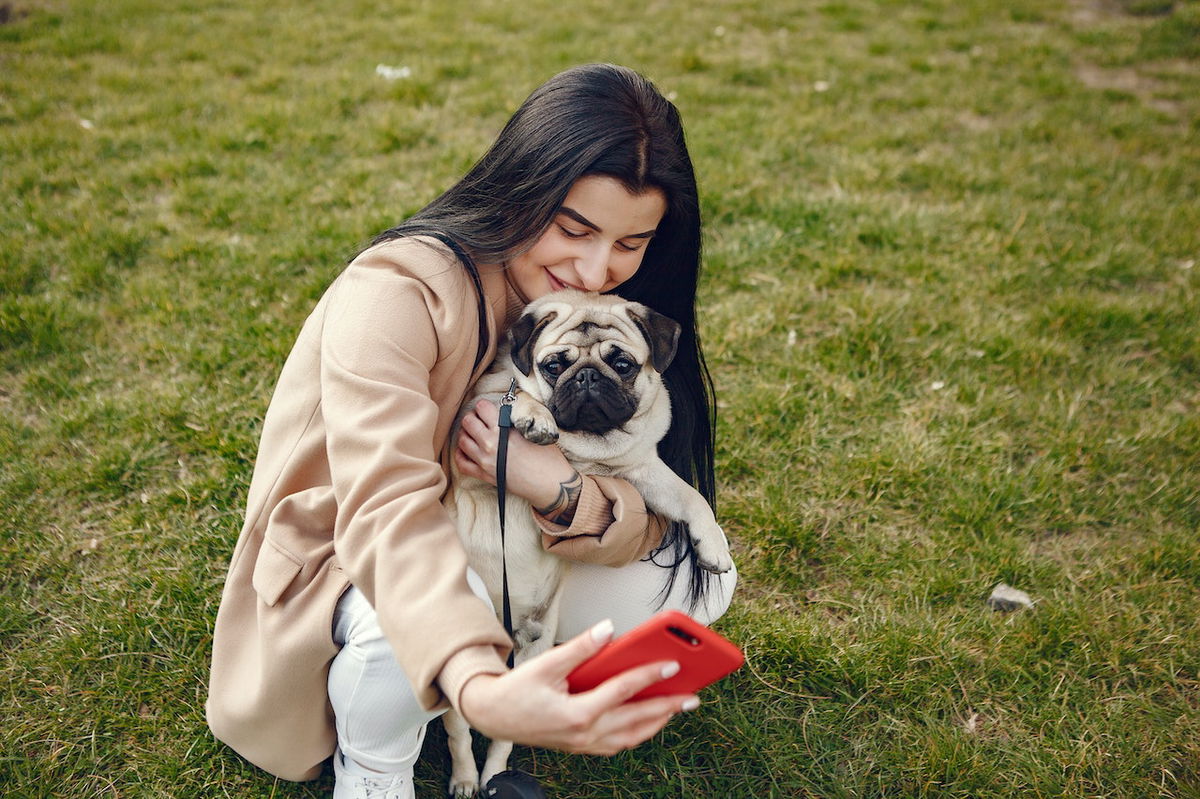
1. Pugs were originally bred for companionship
Unlike most other dog breeds, Pugs were originally bred to serve as lapdogs for the Chinese emperors in their royal courts.
These wrinkled dogs formed the perfect combination of top-notch entertainers and majestic lap dogs for the noblemen.
2. The name ‘Pug’ is believed to come from their facial expression
No one really knows the exact reason why these dogs were named Pugs, but it is widely accepted by many historians that the name was derived from their characteristic facial expressions.
This might have occurred in the 17th and 18th centuries when people from the West had the culture of keeping marmoset monkeys, also known as Pug Monkeys, as pets.
These creased -faced primates had a facial expression similar to that of the Pugs, hence the name.
3. Pugs are not related to Bulldogs
Some people think that Pugs are close cousins of the Bulldogs. In fact, they are sometimes known as ‘Dutch Bulldogs’ which gives the impression that they come from the Bulldog family.
However, chromosomal DNA testing has proven without a doubt that Pugs are not genetically related to Bulldogs.
4. Pugs are one of the oldest dog breeds
Pugs are believed to have originated in ancient China with a history that dates back to almost 2400 years ago, making them one of the oldest dog breeds that we love today.
5. Pugs are not high maintenance dogs
Pugs can thrive with minimal space and human companionship, making them one of the easiest dog breeds to maintain.
These crinkly canines have often been described as ‘multum in parvo’, a Latin phrase which means ‘a great deal in a small space or in brief.’
Pug Puppies
Owning a Pug puppy is an experience filled with laughter, love, and rewarding moments, thanks to the boundless energy and charm.
You can own a Pug puppy by either adopting one from an animal shelter or purchasing from a reputable breeder. Choosing between the two will boil down to your personal preferences and needs.
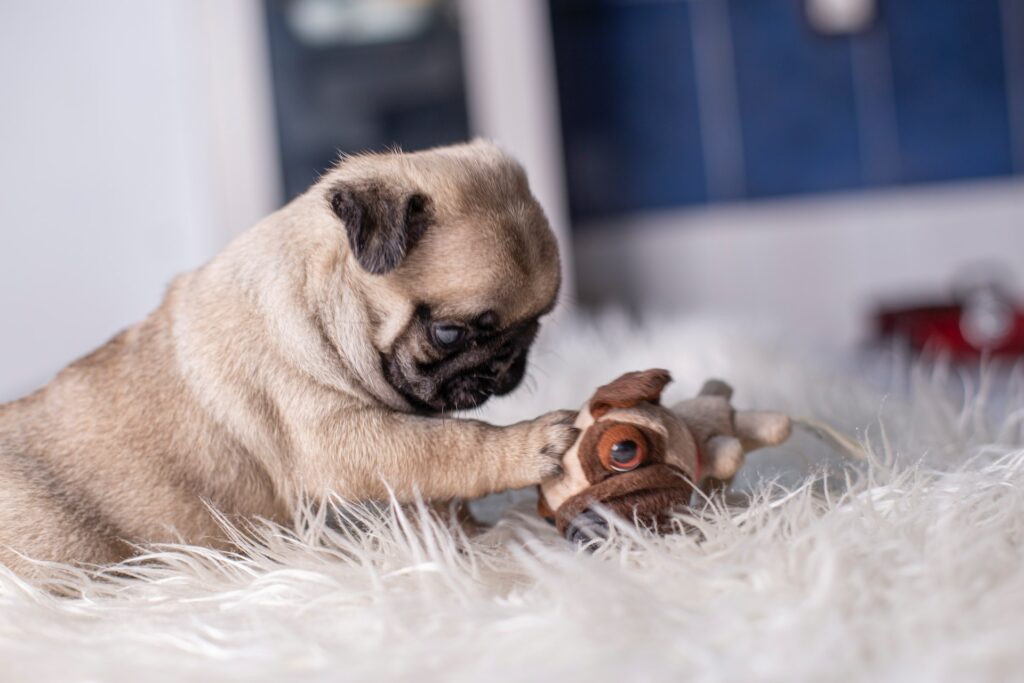
As a new Pug puppy owner, you should be prepared for the playful antics and special kind of warmth that these pups bring into their households.
Start the journey by puppy-proofing your home and furnishing their areas to include a doggy bed, warm bedding, bowls, and puppy food supplies.
Pug Physical Characteristics
Size and weight range
A fully grown pug male can stand anywhere between 10 – 13 inches from the ground while their female counterparts have a height range of 9 – 12 inches.
In terms of weight, a mature male Pug can tip the scale within the range of 14 to 18 pounds while females are a little lighter with a weight range of between 13 to 17 pounds.
It is not uncommon to find bigger Pugs. The Daily Mail reported about Gibbs – a pug adopted by the Scofield family who grew to become 2.2 pounds above the recommended weight.
Coat color and texture
The American Kennel Club (AKC) recognizes only two colors of purebred Pug dogs: fawn and black. Various shades and hues of fawn ranging from lighter fawn to darker fawn are acceptable.
The Canadian Kennel Club (CKC) breed standards allow for three official Pug colors which are black, fawn, and silver-fawn.
The shades of fawn acceptable by the CKC can be of various shades ranging from reddish gold, lighter apricot, and deeper apricot.
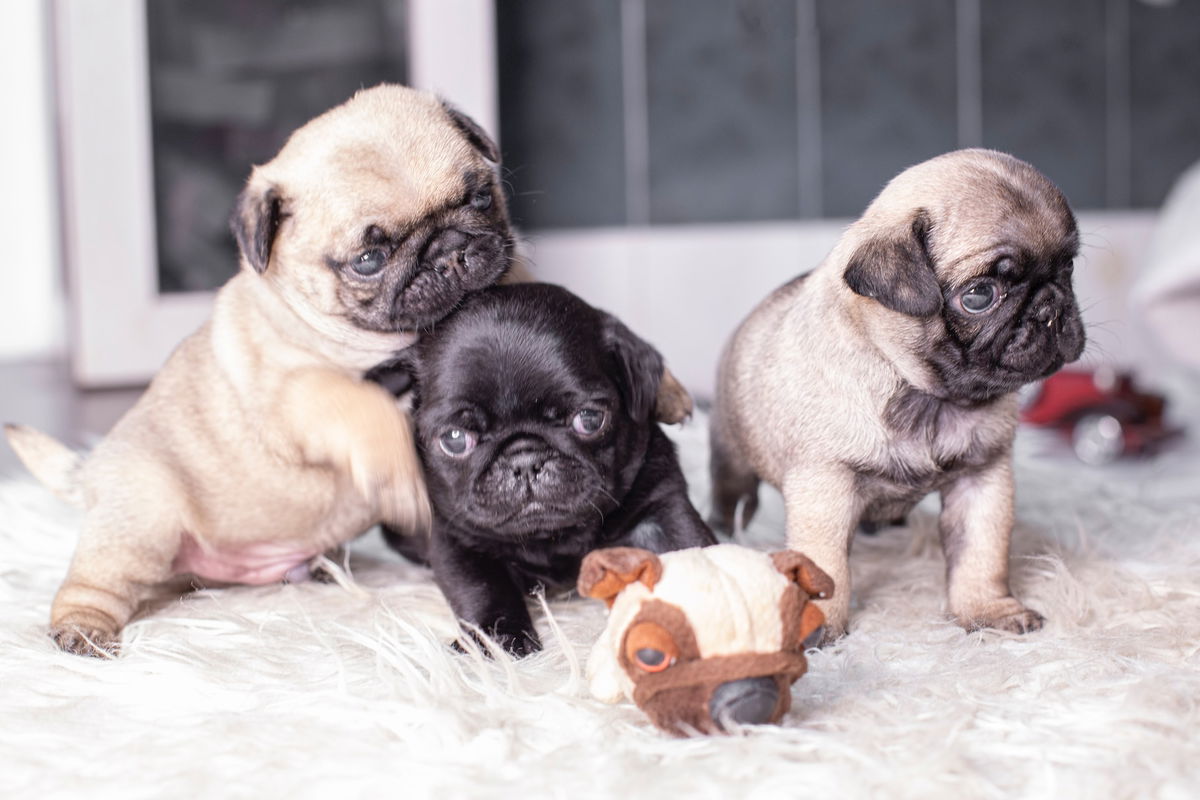
Pugs with a solid black color without any markings on the coat are one of the rarest colors of this breed that is hard to find.
Purebred Pug dogs have a very short, silky-smooth, and shiny coat with little or no undercoat. These dogs experience moderate shedding so you need to keep up with regular grooming.
Distinctive features
One of the most distinctive features of the Pug dog breed is their signature wrinkly face which gives them a human expression.
These little charms also have large rounded eyes which gives them a prominent appearance and expression.
You’ll also not fail to notice how short and squire the Pug Muzzle is, and crowned with a slight underbite.
Pug’s round head is also a distinctive feature and it’s topped by small ears that may come in two shapes.
Some Pugs (the show-bred types) have a button ear which is when they flap forward. Other pugs’ ears top flap fold back to reveal the inner part.
Pug Temperament and Personality
Pugs were originally bred to be human companions and they have a loyal and affectionate temperament which makes them excel in their innate lap dog roles.
The pug can thrive with attention from their human caregivers and they tend to be satisfied when sitting on their owners’ lap as they relax, read a book, or watch a movie.
This does not mean that the Pug is a boring dog breed. These little wrinkly-faced canines are comical and they can create all sorts of entertainment thanks to their playful antics.
It’s also important to appreciate that the temperament of an individual dog can be affected by various factors including heredity and socialization.
A well-trained Pug is good for a family setup thanks to their inherent desire to approach people and make friends with everyone.
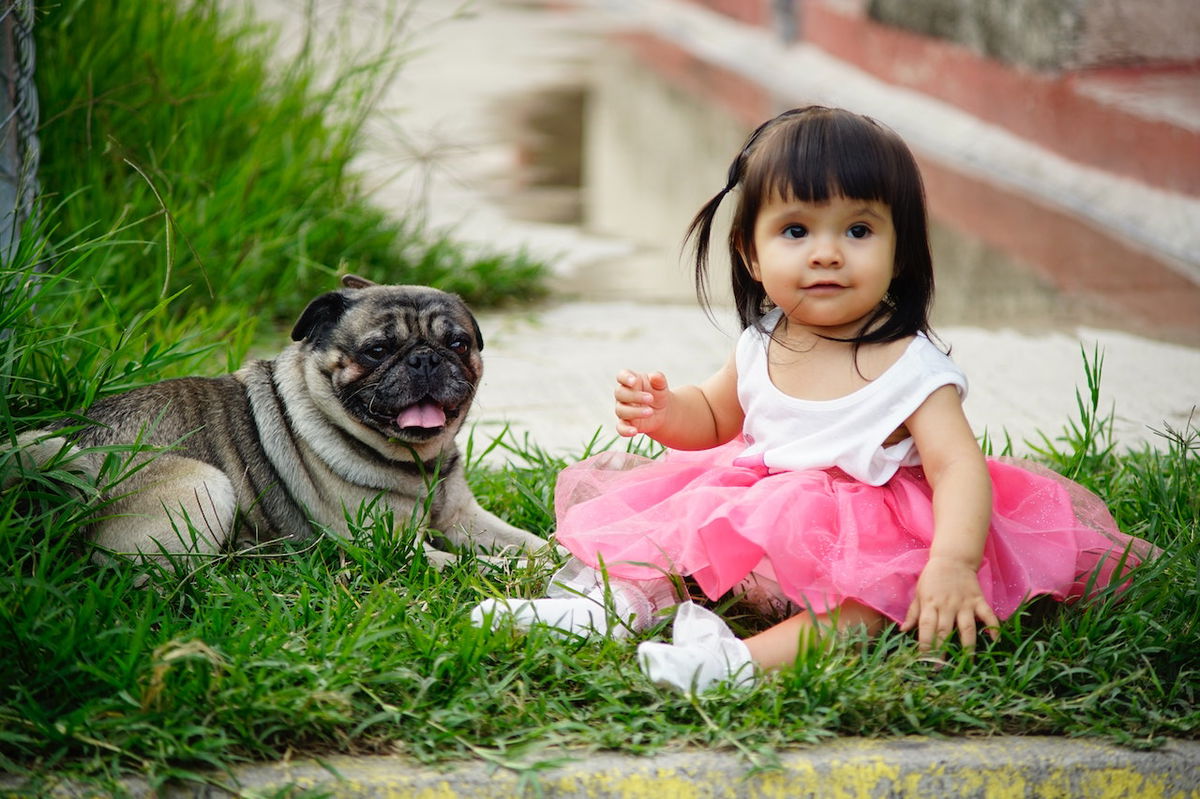
Pugs are exceptionally good with children and they can thrive when playing interactive games with the little ones.
If you’re still contemplating getting your first household dog, adopting a Pug can be a superb choice since they are friendly and don’t require too much resources and time for maintenance.
On the other hand, pet parents with multiple pets in their households can never go wrong with a pug. The social skills and friendly disposition of these pups can extend to other pets in the house.
Pug Intelligence
According to research on ‘The Intelligence of Dogs’ by Dr. Stanley Coren, Pugs emerged position 57 out of 138 breeds tested, which makes them neither the smartest nor the dumbest.
This ranking placed the Pug at a fair working and obedience intelligence level. Most Pugs have shown impressive results for obedience training when using the ‘what’s in it for me?’ method.
This is where you form a reward-based training program for your dog while factoring in their tendency to stubbornness during the training period.
Pug Health and Lifespan
Average lifespan
The average lifespan of a healthy Pug falls within the range of 12 to 15 years, which is not far from other related dog breeds.
A pug named Snookie from South Africa died aged 27 years and still holds the record of the longest living Pug in the Guinness Book of World Records.
Common health issues and genetic disorders
Pugs are generally healthy and robust little dogs, but just like all other dog breeds, they are prone to some health conditions either genetically or due to poor breeding practices.
The following are some of the common health problems in Pugs:
- Hip Dysplasia
- Epilepsy
- Brachycephalic Obstructive Airway Syndrome (BOAS)
- Nerve Degeneration
- Corneal Ulcers
- Patella Luxation
- Pug Dog Encephalitis
- Legg-Calve-Perthes disease
This does not mean that all Pugs will suffer from any or all of these conditions, but it’s a good idea to beware of them if you’re parenting this breed.
Preventative measures for good health
- Make sure to take your Pug for regular vet visits for wellness checks. This will enable the vet to monitor your dog’s health situation and recommend prompt treatment in case of any problem.
- Your veterinarian should keep your Pug updated with all the core vaccines and recommended booster shots. Doing this will strengthen your dog’s immunity and prevent them from communicable infections.
- It’s important to maintain a healthy weight for your Pug since it helps reduce the risk of hip dysplasia and other chronic health concerns.
- For a healthy weight and generally improved health, make sure to provide your dog with a high-quality diet tailored to meet their nutritional demands.
- Pugs can be sensitive to high temperatures. We therefore recommend that you avoid exposing your Pug to excessive heat since it can lead to breathing difficulties and discomfort.
- Even though Pugs may not be very active dogs, it is still recommended to provide them with regular exercise to improve their metabolic functions.
Pug and Allergies
Even though Pugs have short and silky-smooth coats, they are prone to shed moderate amounts of fur throughout the year with excessive hair fall witnessed during seasonal changes.

Hypersensitive Pug owners will need to keep up with regular grooming to reduce the amount of fur that may cause negative reactions.
You may also want to watch out for pet dander and protein from dog urine and saliva since they can also cause negative reactions in allergy-prone individuals.
Pug Grooming Needs
Coat maintenance
Brushing your Pug regularly is a good step in keeping their coats in top condition, and minimizing shedding especially during the seasonal changes.
Bathing your Pug once a month is enough to keep them clean and well-groomed. The small size of these charming canines makes it easy to bathe them without too much effort.
Always use dog shampoo and other canine-specific grooming products when bathing your dog to ensure they don’t experience negative reactions from harsh chemicals.
Take special care of your Pug’s protruding eyes when giving them a full bath since they can be vulnerable to soap irritation and injuries.
Pugs’ nails will typically not wear down on their own, making it essential for responsible Pug owners to trim their dog’s nails regularly.
Nail Trimming
Overgrown nails can make it difficult for your dog to walk properly and it also causes discomfort and encourages unwanted habits such as scratching on soft furniture.
Facial Care
Due to the unique facial appearance of the Pug, we recommend you regularly clean them, especially in between the folds.
The face folds can harbor infections if left to stay moist and dirty. The facial creases should be wiped between baths and dried thoroughly after baths to discourage bacterial growth.
You can use a soft cotton cloth to wipe down your Pug’s face or get some alcohol-free puppy wipes to clean the folds.
Dental care
Like most other small breed dogs, Pugs are prone to dental diseases if their oral hygiene is not kept in check.
Regular teeth brushing with canine toothpaste and a soft toothbrush can help prevent gum diseases and keep your dog’s mouth smelling fresh.
You can also use dental treats to maintain your Pug’s oral hygiene. The hard texture of these treats helps remove plaque and prevents the formation of tartar.
Ear cleaning
Get a veterinary-approved ear cleanser for Pugs and use it with a soft cotton ball to wipe down your furry friend’s ear canal.
Always be gentle when working your war inside the ear flaps and don’t insert any rough material inside the dog’s ear canals.
To get the most when grooming your Pug, make sure to make the process sweet and with a pleasurable experience filled with rewards and petting.
It’s also important to check for any external infections, rashes, redness, hotspots, and wounds as you groom your dog.
Pug Exercise and Activity Levels
Pugs don’t require intensive exercise levels compared to high-energy breed dogs. They however need daily physical stimulation to keep them healthy and in top condition.

These wrinkly dogs can therefore be good for new pet parents who don’t have lots of time to engage physically with their canine companions.
Suitable activities and games for Pugs
- Short walks
- Moderate runs
- Hide and seek
- Puzzle games
- Obedience training
- Indoor obstacle course
- Swimming
- Scent games
- Playing fetch
- Trick games
Importance of mental stimulation
- Prevents boredom and relieves the pug from stress and anxiety
- Enhances the dog’s problem-solving skills
- Prevents mental decline (canine dementia) in senior Pugs
- It helps to strengthen your bond and relationship with the dog.
Pug Training and Socialization
Pugs need early socialization from a young age to make them well-rounded. These sweet-faced canines are people pleasers and smart enough to be taught, even though they can be stubborn due to their characteristic strong-will attitude.
All you need is patience and consistency to be able to train your dog effectively on command and obedience skills.
Pug Living conditions
Pugs are highly adaptable canines who can thrive in any living conditions that give them a clear chance to bond with their human caregivers.
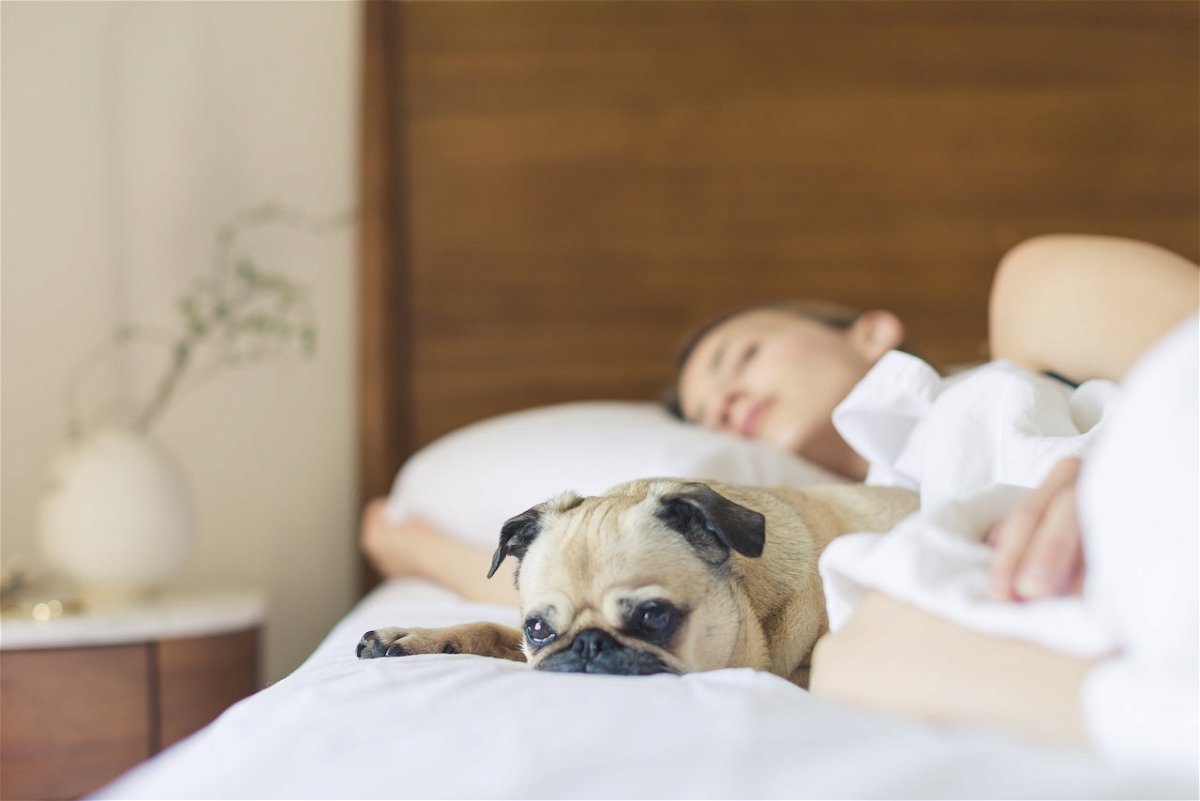
Whether you’re an apartment dweller or you live in a homestead with a large backyard, you can tag along a Pug in your living space while ensuring they get the best possible care.
Pug Diet and Nutrition
Pugs need a high-quality diet with generous amounts of animal proteins and tiny tastes of fruits and vegetables for other essential nutrients.
Since Pugs love to snuggle and can have an insatiable appetite, many vet nutritionists recommend limiting carbohydrates in their diet since it can lead to obesity.
Work out the perfect portion for your dog and feed them throughout the day in scheduled sessions for the best feeding practices.
Pug Pregnancy and litter size
The average gestation period for Pugs is within 60 – 63 days which is expected for most dog breeds within their size range.
Mots pregnant pugs can be expected to give birth to 1 – 6 puppies per litter although some can birth as many as 9.
Sarah Robson’s Pug named Belle shocked her family after delivering 10 healthy puppies at a go in October 2014, which the local vet said was the largest litter within the area.
Your vet may recommend an X-ray to be done on your upcoming Pug mother after 6 weeks to get a clear picture of the number of puppies to expect.
The number of puppies delivered is affected by various factors including the health of the parents, diet, and nutrition.
Conclusion
Pug dog breeds are awesome companions who have been tried and tested for a long time. These little pups are highly cherished for their charismatic personalities, charm, and unique facial folds.
Their affectionate temperament and high adaptability to various living conditions make them good candidates for people looking for household pets.
Despite Pugs’ willingness to snuggle all day on your lap, it’s always a good idea to work them out as a preventive measure of obesity.
Laura is the founder of Furs'n'Paws. She is a also a pet writer and expert with more than 20 years of experience of working with dogs and cats. She developed a very strong love for animals at a young age. Her passion led her to establish a thriving pet sitting and dog walking business in Dubai. As an expert in pet training, behavior, and nutrition, Laura is committed to helping pet owners and pet lovers by offering high-quality information on a wide range of topics.


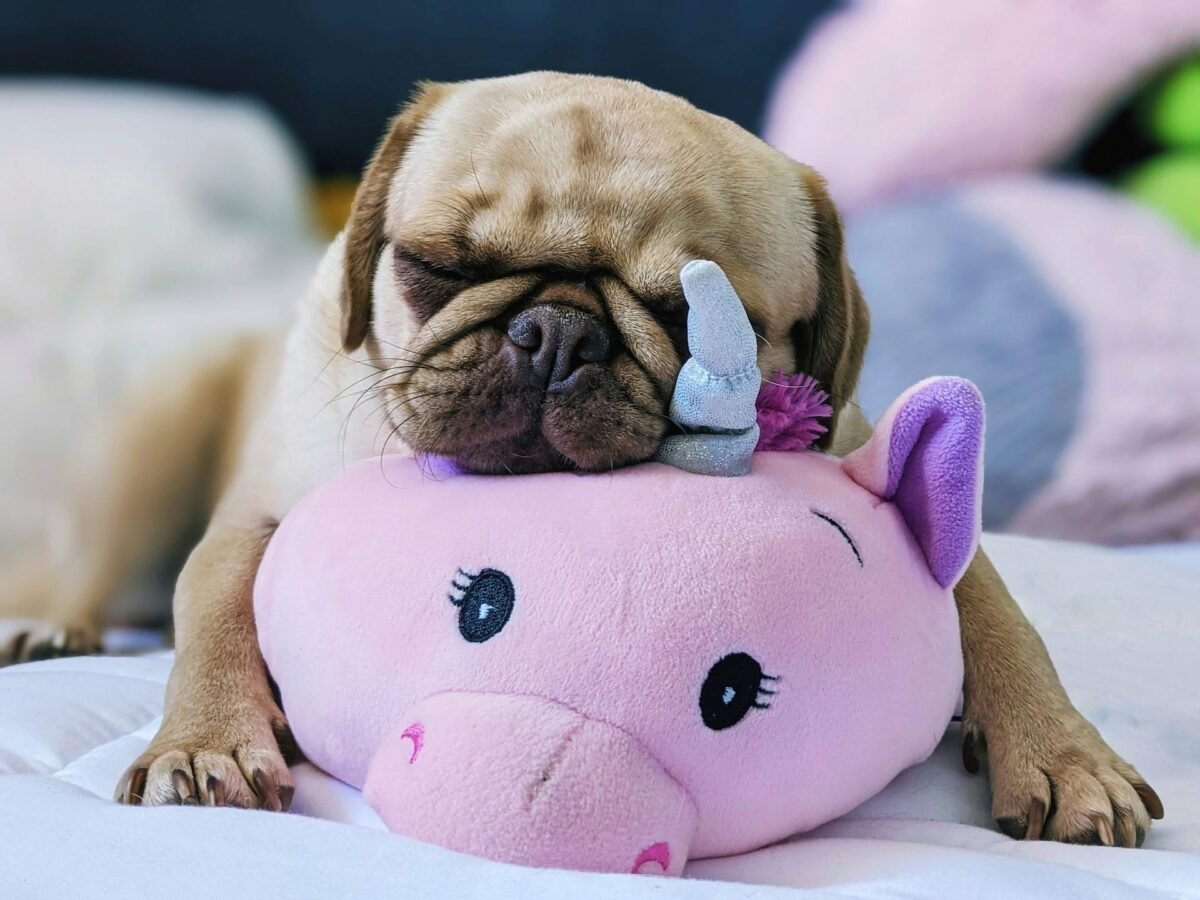
No responses yet